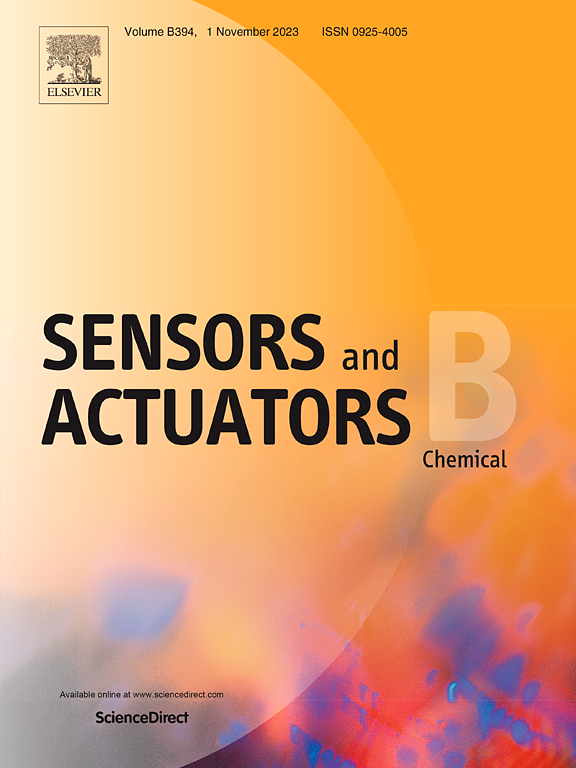p型MOS气体传感器的幂律响应
IF 8
1区 化学
Q1 CHEMISTRY, ANALYTICAL
引用次数: 0
摘要
幂律响应被认为是金属氧化物半导体(MOS)气体传感器的典型特征,可以用来揭示其潜在的传感机制。幂律响应可以简单地理解为氧与MOS表面的基本电子传导和质量作用的结果,它们分别是传感器函数和接收函数的基础。一般来说,幂律响应的研究主要集中在n型MOS气体传感器上,而p型MOS气体传感器的幂律响应研究并不丰富。考虑到p型MOS气体传感器的幂律响应已经得到证实和报道,本工作旨在从理论和实验两个方面阐述幂律响应。最后,建立了p型MOS气体传感器的幂律响应理论模型,并通过实验验证了该模型的有效性。这将有助于突出研究的客观性和新颖性,以及对气体传感领域的影响。本文章由计算机程序翻译,如有差异,请以英文原文为准。
Power-law Response for P-type MOS Gas Sensors
Power-law response has been recognized as a typical characteristic of metal oxide semiconductor (MOS) gas sensors and could be used to reveal the underlying sensing mechanism. Power-law response could be simply regarded as a result from the basic electronic conduction and mass action of oxygen with surface of MOS, which is the basic of the transducer function and reception function, respectively. Generally, studies on power-law response were focused on n-type MOS gas sensors, whereas, p-type one is far from rich. Considering that power-law response has been evidenced and reported for p-type MOS gas sensors, the present work aimed at elaborating the power-law response from both theoretical and experimental aspects. Finally, a theoretical model of power-law response was built for p-type MOS gas sensors and has been valid by experimental results. It would helpful to highlight the objective and novelty of the study as well as the impact on the gas sensing field.
求助全文
通过发布文献求助,成功后即可免费获取论文全文。
去求助
来源期刊

Sensors and Actuators B: Chemical
工程技术-电化学
CiteScore
14.60
自引率
11.90%
发文量
1776
审稿时长
3.2 months
期刊介绍:
Sensors & Actuators, B: Chemical is an international journal focused on the research and development of chemical transducers. It covers chemical sensors and biosensors, chemical actuators, and analytical microsystems. The journal is interdisciplinary, aiming to publish original works showcasing substantial advancements beyond the current state of the art in these fields, with practical applicability to solving meaningful analytical problems. Review articles are accepted by invitation from an Editor of the journal.
 求助内容:
求助内容: 应助结果提醒方式:
应助结果提醒方式:


